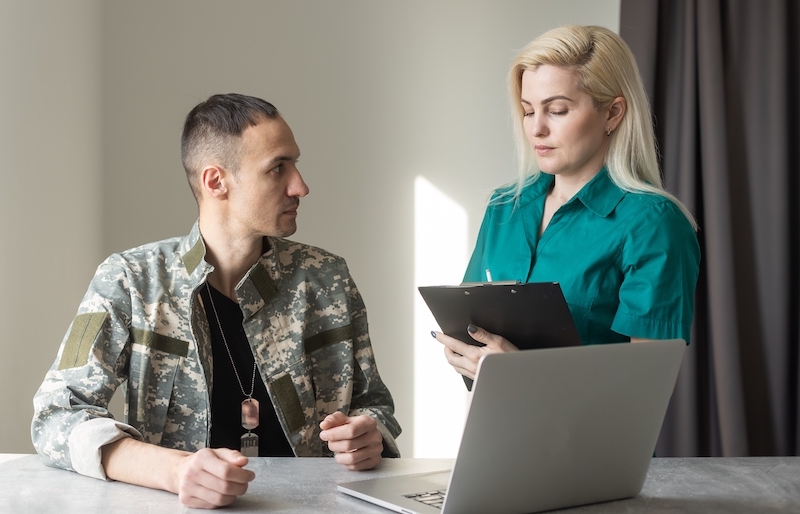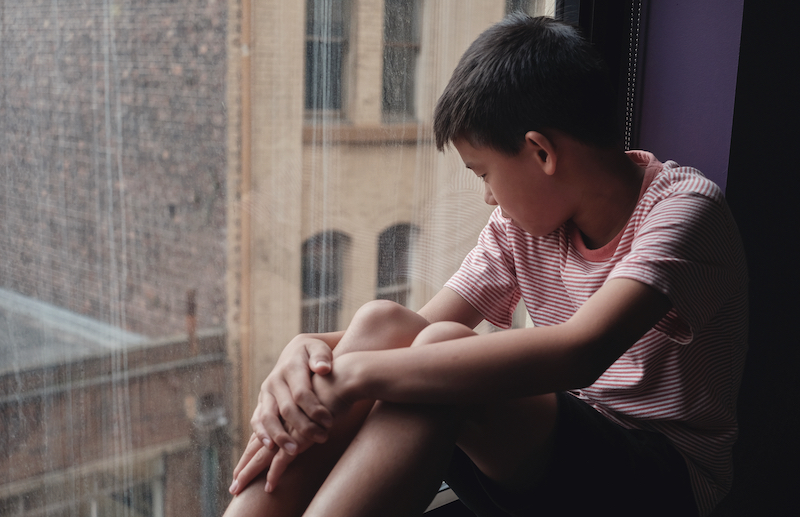A study of vets in the American Journal of Psychiatry reaffirms the value of remote care
For people with opioid addiction, many hurdles stand in the way of getting effective treatment—and COVID-19 could have made it harder.
But with widespread implementation of telehealth, a new study in the American Journal of Psychiatry shows, more people are receiving treatment, even amid the pandemic. The national study looked at the care received by veterans who received buprenorphine to treat their opioid use disorder both before and after the pandemic shifted care to telehealth visits in early 2020.
It shows that virtual visits with addiction care providers allowed many patients to stay on their medication to support their recovery throughout the first year of the pandemic.

It also shows an important role for telephone-only visits for these patients. Audio visits far outpaced both video visits and in-person visits for all of 2020. And even by early 2021, phone visits still accounted for half of all veterans’ buprenorphine-related visits each month, with video at 32% and in-person care at 17%.
On a monthly basis, 14% more veterans were receiving buprenorphine care in February 2021 compared with March 2019. During that same time, the total number of veterans receiving any sort of addiction treatment dropped 6%.
The study is published by a team from the University of Michigan and VA Ann Arbor Healthcare System. The lead author is Allison Lin, MD, MS, an addiction psychiatrist and researcher in the Addiction Center at Michigan Medicine, U-M’s academic medical center, and the VA Center for Clinical Management Research.
Informing Telehealth Policy
The new telephone, video and in-person treatment data could help inform major policy questions being debated right now.
Policymakers are working to potentially replace temporary pandemic-era emergency telehealth policies for patients nationwide, not just in the VA system. Before the pandemic, audio-only visits were typically not allowed, and video visits to patients at home were often not reimbursed.
Policymakers should consider evidence carefully before making final rules, says Lin. “Telehealth for patients receiving buprenorphine for opioid use disorder was relatively new in the VA nationwide before the pandemic struck, and only video was allowed. The rapid switch to virtual visits for most patients kept people from dropping out of care, and telephone visits played a key role,” she said. “Thanks to the VA’s national patient data system, we’re able to provide some of the first understanding of phone, video and in-person visits across the pre-pandemic and pandemic era.”
Phone access, she notes, may be especially important for people with opioid use disorder, who often lack stable housing, high-speed internet or access to a computer.
“Phone visits may provide flexibility to make it easier to keep people engaged in care over time,” she said. “These are also often some of the sickest patients we care for, who have some of the highest risk for overdose. Keeping these patients in care is a major priority.”
“Throughout the pandemic, the assumption has been that we have to return to pre-COVID-19 status. But this may be a case where any attempts to push people back to in-person care if they don’t want to go, or to prohibit virtual visits, might have unintended effects.”
—Allison Lin, University of Michigan
Policies that make it as easy as possible for patients to stick with addiction care could make a major impact on their overall outcomes, adds Lin, who is a member of the U-M Institute for Healthcare Policy and Innovation and the U-M Injury Prevention Center.
“Anecdotally, some clinics have seen no-shows decrease over the past two years, because we could do phone or video,” she said. “Throughout the pandemic, the assumption has been that we have to return to pre-COVID-19 status. But this may be a case where any attempts to push people back to in-person care if they don’t want to go, or to prohibit virtual visits, might have unintended effects. If policies don’t allow flexibility and provide options, we may lose people, some of whom have only known care via phone or video.”
Next Steps
In addition to this study, Lin notes, further work is critically needed to understand patient and clinician experiences and preferences, and to further evaluate the quality of telehealth-delivered care.
“The goal is to determine what high-quality care looks like, both via telehealth and in-person, to inform standards for the field, but that will take time,” she said.
In the meantime, efforts to improve access to buprenorphine care must continue, she says. “Addiction is the one illness we have in all of medicine where the condition itself makes it hard for people to want to seek treatment,” Lin said. “But just because we changed to telehealth doesn’t mean we removed other barriers to care. It will take more to actually get effective care for OUD to people who need it.”
Results from their pilot study of this program were very promising, and now they are testing this program in two full-scale randomized controlled trials supported by the National Institutes of Health.
Lin and her U-M colleague, addiction psychologist and researcher Erin Bonar, PhD, are working on exactly that issue in their current research. Instead of waiting for patients to seek addiction care, their team is exploring ways to outreach to patients and provide treatment via telehealth. This goes beyond past studies that have left it up to patients to make a call to get treatment. Results from their pilot study of this program were very promising, and now they are testing this program in two full-scale randomized controlled trials supported by the National Institutes of Health.
“Addiction care and research have often focused on patients who are treatment-seeking and already in the door. But that’s a minority of those with substance use disorders,” said Lin. “Now that we have seen the power of telehealth to support recovery, we need to reach more of those who could benefit from care. We have to make access to addiction care a lot easier and meet people wherever they are.”
In addition to this effort, Lin worked with others to develop a free toolkit to help providers ensure that they provide high-quality buprenorphine care and other treatment for opioid use disorder. It’s available through the Providers Clinical Support System, funded by the federal Substance Abuse and Mental Health Services Administration (SAMHSA). The recent easing of federal rules for providers who wish to prescribe buprenorphine could mean more providers can begin doing so.
This article was posted with permission from University of Michigan’s Addiction Center, a partner of TreatmentMagazine.com in working to improve addiction outcomes.
Top photo: Shutterstock














